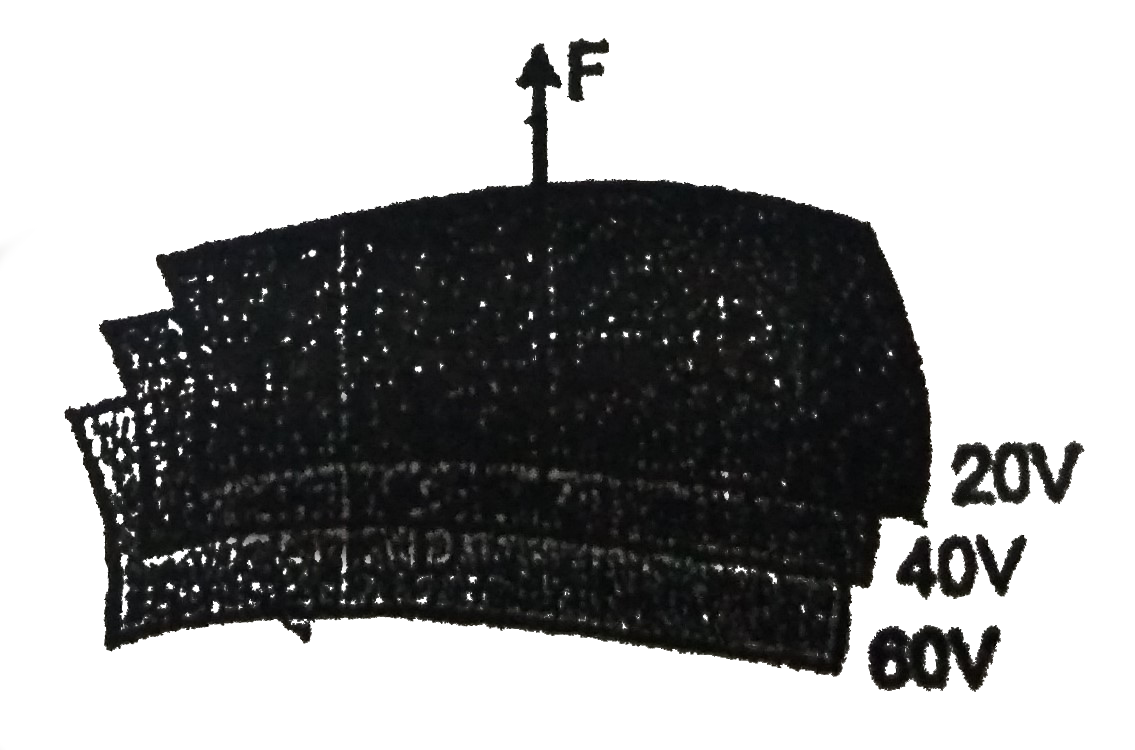Two charges 2 µC and –2 µC are placed at points A and B 6 cm apart.
(a) Identify an equipotential surface of the system.
(b) What is the direction of the electric field at every point on this surface?
(a) The plane normal to AB and passing through its mid-point has zero potential everywhere.
(b) Normal to the plane in the direction AB.
Topper's Solved these Questions
- ELECTROSTATIC POTENTIAL AND CAPACITANCE BOOK - NCERT BANGLISHCHAPTER - ELECTROSTATIC POTENTIAL AND CAPACITANCE EXERCISE - ADDITIONAL EXERCISES
1 Videos
- ELECTROSTATIC POTENTIAL AND CAPACITANCE BOOK - NCERT BANGLISHCHAPTER - ELECTROSTATIC POTENTIAL AND CAPACITANCE EXERCISE - ADDITIONAL EXERCISES
1 Videos
- ELECTROMAGNETIC WAVESBOOK - NCERT BANGLISHCHAPTER - ELECTROMAGNETIC WAVESEXERCISE - ADDITIONAL EXERCISES
5 Videos
- MAGNETISM AND MATTERBOOK - NCERT BANGLISHCHAPTER - MAGNETISM AND MATTEREXERCISE - Additional Exercises
12 Videos
Similar Questions
Two charges 2μCand−2μC are placed at points A and B 6 cmapart.
(a) Identify an equipotential surface of the system.
(b) What is the direction of the electric field at every point on this surface ?
View SolutionTwo charges 2μCand−2μC are placed at points A and B 6 cm apart.
(a) Identify an equipotenital surface of the system.
(b) What is the direction of the electric field at every point on this surface ?
View Solution
Knowledge Check
A family of equipotential surface are shown. The direction of the electric field at point A is along-
 AABBACCADDAF
AABBACCADDAF
Two charges +2μCand−2μC are placed at points A and B, 5 cm apart. Depict an equipotential surface of the system.
View SolutionTwo point charges 10μCand−10μC are separated by a distance of 40 cm in air.
Draw an equipotential surface of the system.
View SolutionA family of equipotential surface are shown. The direction of the electric field at point A is along-

View SolutionSome equipotential surfaces are shown in the figure . Determine electric field at points A,B,C in (a) and in (b).

View SolutionA unit charge moves on an equipotential surface from a point A to point B, then
View SolutionOn the basis of your understanding of the following paragraph and the related studied concepts.
An equipotential surface is a surface with a constant value of electric potential at all points on the surface. The component of electric field parallel to an equipotential surface is zero, as the potential does not change in this direction. Thus, the electric field is perpendicular to the equipotential surface at each point of the surface. Further, say the direction of electric field electrical potential gradually fall with distance.
Draw equipotential surfaces around an isolated positive point charge + q. Mark direction of electric field →E also.
View SolutionOn the basis of your understanding of the following paragraph and the related studied concepts.
An equipotential surface is a surface with a constant value of electric potential at all points on the surface. The component of electric field parallel to an equipotential surface is zero, as the potential does not change in this direction. Thus, the electric field is perpendicular to the equipotential surface at each point of the surface. Further, say the direction of electric field electrical potential gradually fall with distance.
If a charge of 2 nC is taken from equipotential surface number 2 to 3, what is the amount of work done ?
View Solution
